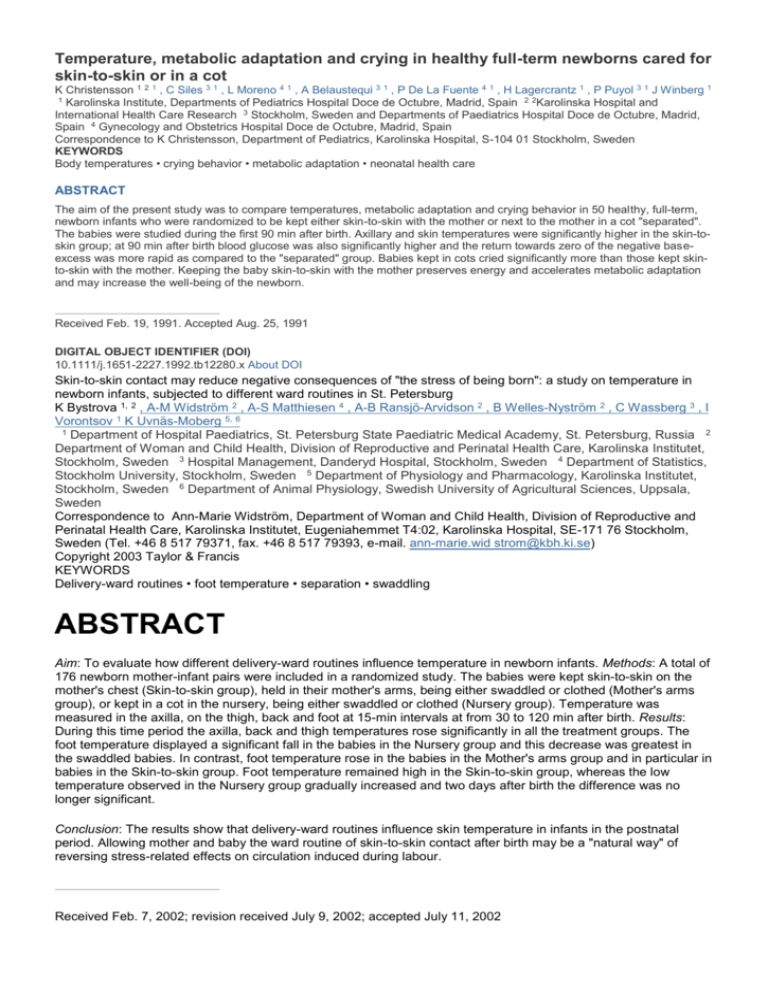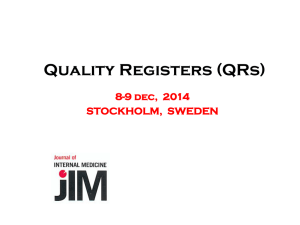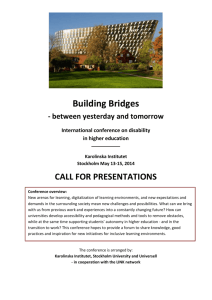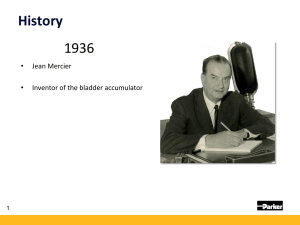abstract - dendimim
advertisement

Temperature, metabolic adaptation and crying in healthy full-term newborns cared for skin-to-skin or in a cot K Christensson 1 2 1 , C Siles 3 1 , L Moreno 4 1 , A Belaustequi 3 1 , P De La Fuente 4 1 , H Lagercrantz 1 , P Puyol 3 1 J Winberg 1 1 Karolinska Institute, Departments of Pediatrics Hospital Doce de Octubre, Madrid, Spain 2 2Karolinska Hospital and International Health Care Research 3 Stockholm, Sweden and Departments of Paediatrics Hospital Doce de Octubre, Madrid, Spain 4 Gynecology and Obstetrics Hospital Doce de Octubre, Madrid, Spain Correspondence to K Christensson, Department of Pediatrics, Karolinska Hospital, S-104 01 Stockholm, Sweden KEYWORDS Body temperatures • crying behavior • metabolic adaptation • neonatal health care ABSTRACT The aim of the present study was to compare temperatures, metabolic adaptation and crying behavior in 50 healthy, full-term, newborn infants who were randomized to be kept either skin-to-skin with the mother or next to the mother in a cot "separated". The babies were studied during the first 90 min after birth. Axillary and skin temperatures were significantly higher in the skin-toskin group; at 90 min after birth blood glucose was also significantly higher and the return towards zero of the negative baseexcess was more rapid as compared to the "separated" group. Babies kept in cots cried significantly more than those kept skinto-skin with the mother. Keeping the baby skin-to-skin with the mother preserves energy and accelerates metabolic adaptation and may increase the well-being of the newborn. Received Feb. 19, 1991. Accepted Aug. 25, 1991 DIGITAL OBJECT IDENTIFIER (DOI) 10.1111/j.1651-2227.1992.tb12280.x About DOI Skin-to-skin contact may reduce negative consequences of "the stress of being born": a study on temperature in newborn infants, subjected to different ward routines in St. Petersburg K Bystrova 1, 2 , A-M Widström 2 , A-S Matthiesen 4 , A-B Ransjö-Arvidson 2 , B Welles-Nyström 2 , C Wassberg 3 , I Vorontsov 1 K Uvnäs-Moberg 5, 6 1 Department of Hospital Paediatrics, St. Petersburg State Paediatric Medical Academy, St. Petersburg, Russia 2 Department of Woman and Child Health, Division of Reproductive and Perinatal Health Care, Karolinska Institutet, Stockholm, Sweden 3 Hospital Management, Danderyd Hospital, Stockholm, Sweden 4 Department of Statistics, Stockholm University, Stockholm, Sweden 5 Department of Physiology and Pharmacology, Karolinska Institutet, Stockholm, Sweden 6 Department of Animal Physiology, Swedish University of Agricultural Sciences, Uppsala, Sweden Correspondence to Ann-Marie Widström, Department of Woman and Child Health, Division of Reproductive and Perinatal Health Care, Karolinska Institutet, Eugeniahemmet T4:02, Karolinska Hospital, SE-171 76 Stockholm, Sweden (Tel. +46 8 517 79371, fax. +46 8 517 79393, e-mail. ann-marie.wid strom@kbh.ki.se) Copyright 2003 Taylor & Francis KEYWORDS Delivery-ward routines • foot temperature • separation • swaddling ABSTRACT Aim: To evaluate how different delivery-ward routines influence temperature in newborn infants. Methods: A total of 176 newborn mother-infant pairs were included in a randomized study. The babies were kept skin-to-skin on the mother's chest (Skin-to-skin group), held in their mother's arms, being either swaddled or clothed (Mother's arms group), or kept in a cot in the nursery, being either swaddled or clothed (Nursery group). Temperature was measured in the axilla, on the thigh, back and foot at 15-min intervals at from 30 to 120 min after birth. Results: During this time period the axilla, back and thigh temperatures rose significantly in all the treatment groups. The foot temperature displayed a significant fall in the babies in the Nursery group and this decrease was greatest in the swaddled babies. In contrast, foot temperature rose in the babies in the Mother's arms group and in particular in babies in the Skin-to-skin group. Foot temperature remained high in the Skin-to-skin group, whereas the low temperature observed in the Nursery group gradually increased and two days after birth the difference was no longer significant. Conclusion: The results show that delivery-ward routines influence skin temperature in infants in the postnatal period. Allowing mother and baby the ward routine of skin-to-skin contact after birth may be a "natural way" of reversing stress-related effects on circulation induced during labour. Received Feb. 7, 2002; revision received July 9, 2002; accepted July 11, 2002 DIGITAL OBJECT IDENTIFIER (DOI) 10.1111/j.1651-2227.2003.tb00553.x About DOI







